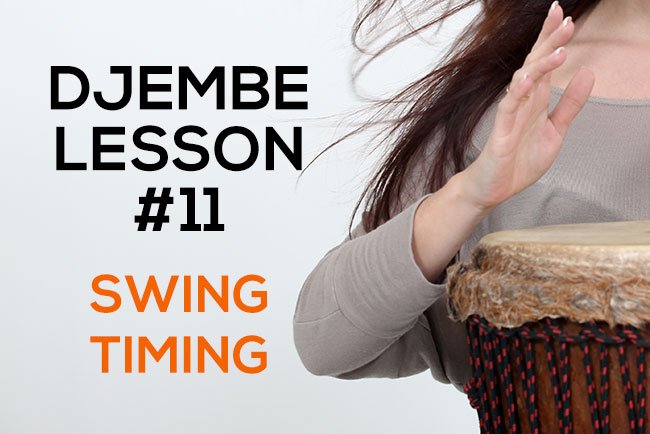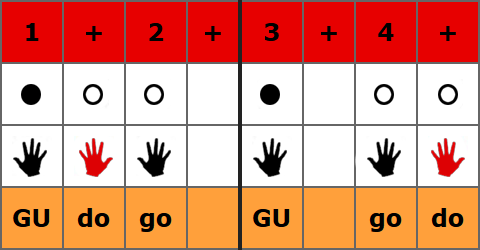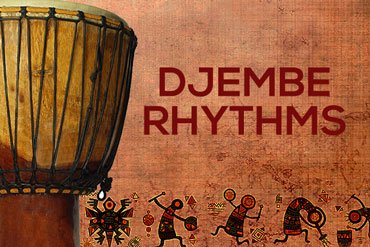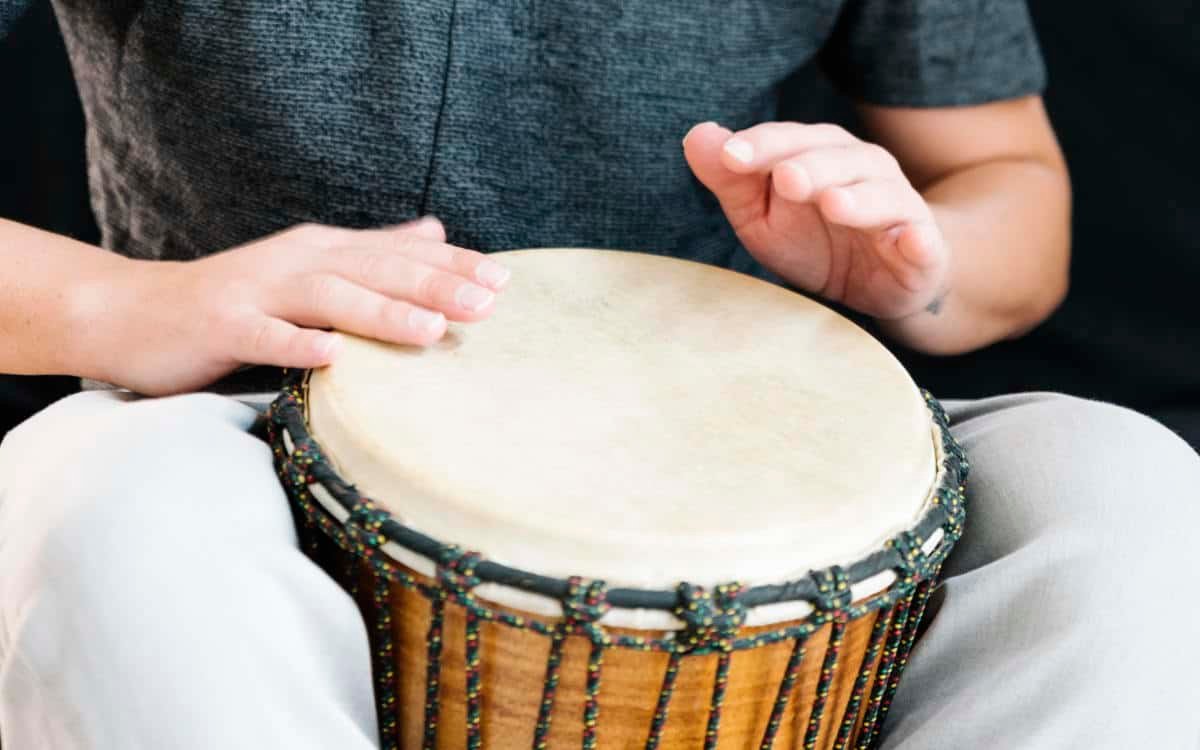
Swing timing is an important concept in djembe drumming, as it occurs frequently in West African rhythms. It also crops up in Western styles of music like jazz, blues and country. Yee haw!
It is a matter of slightly changing the length of certain notes and shortening the length of others to create a difference in how the rhythm sounds.
In practice this usually means where 2 notes are written with equal time lengths, the first is lengthened slightly and the second is shortened, or vice versa. When you play a series of these pairs of notes you get swing timing, also known as the shuffle.
Try this little exercise to help understand it better:
The 'one-and-a' Exercise
Using one hand, tap each finger on a table, VERY SLOWLY, counting to 4:
- index finger on count 1
- the middle finger on 2
- ring finger on 3
- little finger on 4
Do it slowly and count aloud 'One-two-three-four'. When you get to 4 repeat from 1.

Important! Make the transition back to 1 smoothly (i.e. as if you are continuing on to 5).
Now, keep tapping at a nice slow pace, and in between each count, add the words 'and a'. Keep tapping your fingers only on every beat (i.e. don't tap out the 'and a', just say it). Like this:
'One-and-a-two-and-a-three-and-a-four-and-a'...
Important! All the notes are of equal length. In effect, it is one long word: 'oneandatwoandathreeandafouranda'
When you repeat it, it is: 'oneandatwoandathreeandafourandaoneandatwoandathreeandafouranda' etc. Yowser!
On a chart, the beats represented by the words 'and a' are represented by '+' and 'e', like this.

Congratulations, if you understood that, you have a grasp of the concept of triplets. Now to take it a bit further we're going to show you what happens in swing timing.
Swing Timing
Tricky bit ahead! Tap the rhythm again, but this time leave out the 'and', counting 'one a-two a-three a-four'. It is important to leave the space empty where the 'and' used to be (it helps to say the 'and' in your mind).
So without changing the rhythm of the other notes, you end up with:
one (space) a two (space) a three (space) a four (space) a
Or
One a-two a-three a-four
On the chart it looks like this:

To get a better grip on it, and to avoid changing the timing, try adding just the first 'and', to make sure it still sounds the same as before, as shown below.

Viola, you have invented swing timing!
OK, so how does this all relate to African drumming? Well, if you see a rhythm like this...

...in swing timing, it is meant to be played like this:

If you're struggling to play this, try it VERY SLOWLY.
If you're still confused, take heart, swing timing is a complex concept that you will not learn just from one web page. Find other examples online and keep working at it.
Swing Timing is Fluid
The charts above show the basic concept behind swing timing, but in practice the notes are not all exactly the same length. The timing and the spaces between the notes become less precise and more fluid.
The length of the notes can also change over the course of the song. This will change the feel of the swing.
It's something that eventually becomes easier to feel. Getting a hang of it is just a matter of practice. When in a drum circle, take your cue from the leader.
For most people the above explanation is all you need to know.
You're more than ready. Move on to...
















How to write down swing timing in notations? – the only method I came across is linked below (ref. “Example 2” at the bottom of page 8), but I’ve never seen it actually used.
https://csmaccath.com/files/node_files/djembenotation_0.pdf
Great question, usually in music notation it just has the word ‘swing’ next to it to show it’s in swing timing. I can’t think of any other way to do it.